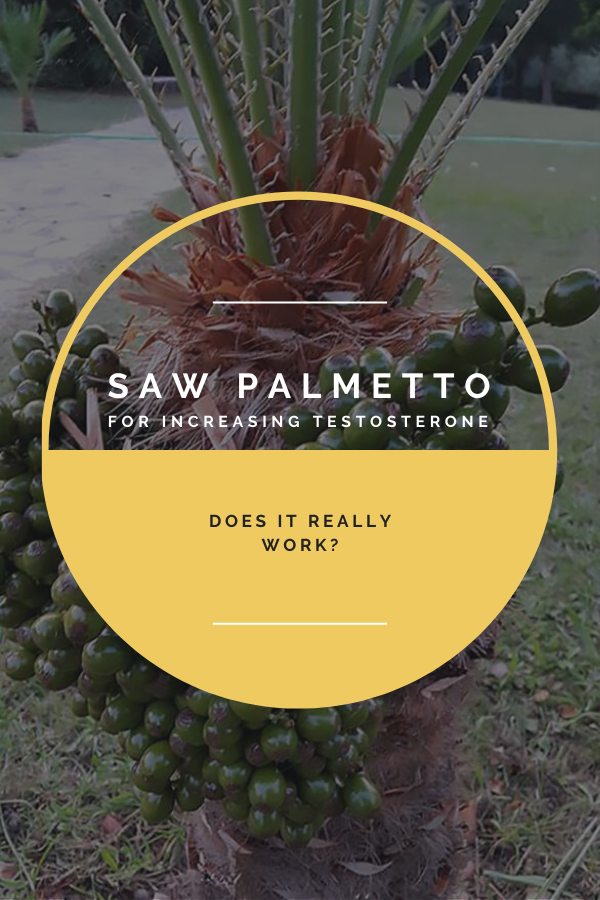
As men grow older, many experience declining prostate health, which significantly affects their lifestyle and well-being. One of the most common conditions threatening the prostate gland is benign prostatic hypertrophy. This swelling of the prostate gland can lead to myriad symptoms such as, increased urinary frequency, weak urinary stream, and difficulty initiating urination.
Saw palmetto is a herbal product used in the treatment of symptoms related to swelling of the prostate gland.
What is Saw Palmetto?

Saw palmetto (Serenoa repens/Sabal serrulata) is a palm like plant with berries that were utilized as a staple food and medicine for the Native Americans of the southeastern United States.
In the early 1900s, men used the berries to treat urinary tract problems, prostate cancer, hair loss, increase sperm production, and boost libido.
What are the uses of saw palmetto?
Today, the primary use of saw palmetto is to treat benign prostatic hyperplasia (BPH), a noncancerous enlargement of the prostate gland. Researchers aren’t sure exactly how saw palmetto works, but it contains plant-based chemicals that may be effective for BPH. Saw palmetto is often combined with nettle extract to treat BPH.
It also has been used to treat hair loss in alternative medicine.
How does Saw Palmetto Simulate Hair Re-growth?
Saw palmetto has also been used as an effective hair loss solution. It helps to prevent an enzyme naming 5-alpha-reductase from transforming testosterone into dihydrotestosterone within the body. Dihydrotestosterone is a prime contributing factor behind the outbreak of androgenic alopecia, or partial baldness.
Presence of this object in large amounts may suffocate the hair follicles and hinder the growth of new hair. Saw palmetto helps to block this element effectively. It therefore prevents hair loss, and stimulates hair re-growth. Read about the Top 10 natural way for hair regrowth here
How does Saw Palmetto Affect the Level of Testosterone in the Body?
Saw palmetto interferes with testosterone’s effects on the body and perhaps reduces the amount of an enzyme that promotes the growth of prostate cells. Lower hormone levels may mean reduced prostate symptoms. Some men take it for this purpose, but others take saw palmetto with the hope that it will increase testosterone’s effects on their bodies.
According to ACS, men sometimes take saw palmetto in order to increase their sex drive, improve libido, and increase fertility.
Read here how maca can prove as a testosterone booster.
What is Saw Palmetto Made of?
Saw palmetto’s active ingredients include fatty acids, plant sterols, and flavonoids. The berries also contain high molecular weight polysaccharides (sugars), which may reduce inflammation or strengthen the immune system.
What do clinical studies say about saw palmetto?
- Several small studies suggest that saw palmetto may be effective for treating BPH symptoms.
- In 2006, a large study of 225 men with moderate-to-severe BPH found no improvement with 320 mg saw palmetto daily for 1 year versus placebo. NCCAM co-funded the study with the National Institute of Diabetes and Digestive and Kidney Diseases.
- There is not enough scientific evidence to support the use of saw palmetto for reducing the size of an enlarged prostate or for any other conditions.
- Saw palmetto does not appear to affect readings of prostate-specific antigen (PSA) levels. PSA is protein produced by cells in the prostate. The PSA test is used to screen for prostate cancer and to monitor patients who have had prostate cancer.
What Should I Know About Saw Palmetto Before Using it?
Saw palmetto has not been approved by the FDA to treat any disease and it should not be substituted for prescription medications.
Saw palmetto has not been evaluated by the FDA for safety, effectiveness, or purity. All potential risks and/or advantages of saw palmetto may not be known. Additionally, there are no regulated manufacturing standards in place for these compounds. Some marketed herbal supplements have been found to be contaminated with toxic metals or other drugs. Herbal/health supplements should be purchased from a reliable source to minimize the risk of contamination.
Talk to a doctor, pharmacist, herbalist, or other healthcare provider before taking saw palmetto. You may not be able to use this product if you have certain medical conditions or take other medications.
When Should I not Use Saw Palmetto?
You should not use this medication if you are allergic to saw palmetto or have certain conditions. Be sure your doctor knows if you have:
- a bleeding or blood clotting disorder (such as hemophilia)
- stomach ulcer with active bleeding
- ulcerative colitis or Crohn’s disease
- PREGNANCY and BREAST-FEEDING: Do not take this product if you are pregnant. Do not breast-feed while taking this product.
What are the Side Effects of Saw Palmetto?
In most cases, side effects of saw palmetto are limited to minor discomforts, such as headache, nausea, dizziness, fatigue, or upset stomach. However, saw palmetto has been linked to liver injury in a few rare cases.
All medicines, supplements, and herbs can interact with one another when taken simultaneously and cause serious problems. Saw palmetto, for example, may interfere with your blood’s ability to clot. If you’re taking prescription blood thinners, such as warfarin or aspirin, you should not take saw palmetto. Check with your doctor about possible interactions.
What are the Available Forms?
Saw palmetto can be purchased as dried berries, powdered capsules, tablets, liquid tinctures, and liposterolic extracts. The product label should indicate that contents are standardized and contain 85 – 95% fatty acids and sterols. Read labels carefully, and buy only from reputable companies.
What is the Recommended Dosage and Where can I Buy Something that Might Work for me?
There are no food sources of saw palmetto. So with your doctor’s consent, you may want to consider saw palmetto tablets/capsules, made by a reputable company.
Typical dosages of standardized extracts range from 100 to 400 mg given twice daily for benign prostatic hypertrophy. It may take four to six weeks for saw palmetto to have an effect.
We recommend buying here –
Bottom Line
The U.S. Food and Drug Administration (FDA) does not regulate herbs and alternative medicines. That means that health claims made by the companies producing these products aren’t verified. In other words, there’s no way to know if the product you’re consuming actually is what the manufacturer says it is.
You must be selective about the products you consume. To be safe, only take herbal medicines under the supervision of your doctor.
Enjoyed Saw Palmetto for Increasing Testosterone – Does it Really Work?? Share it with your friends so they too can follow the Superfoodsliving journey.
Share on Pinterest


